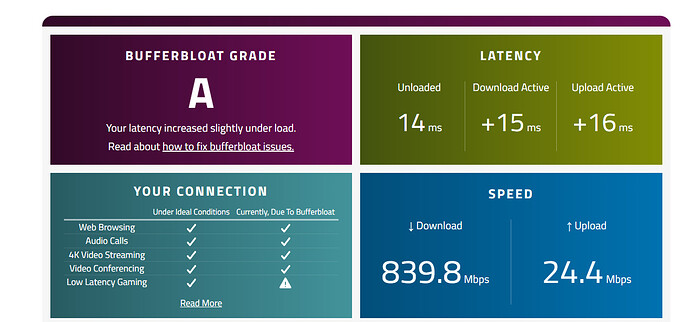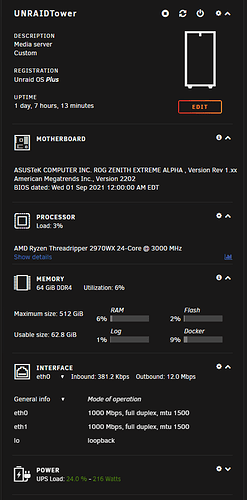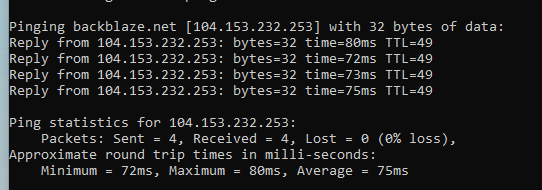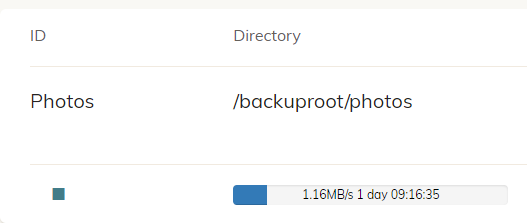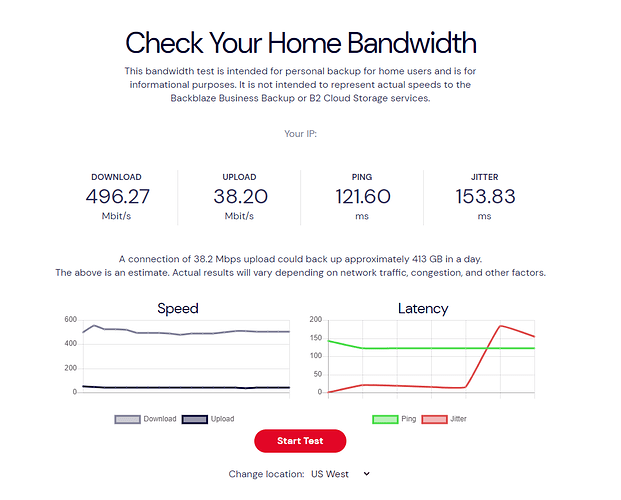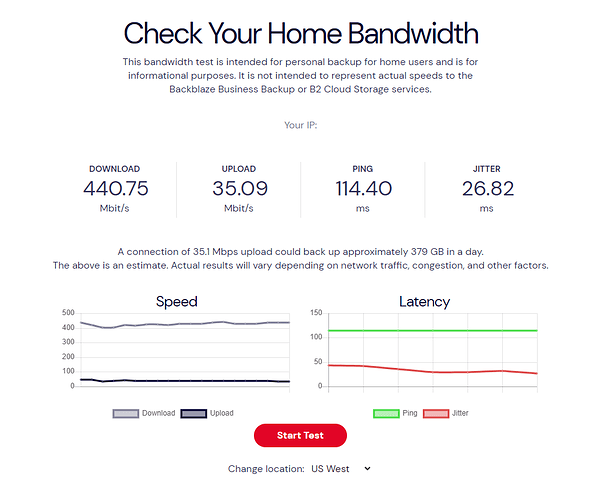Hi Greg,
Based on the screen grab you posted of the UNRAID system info, the ASUS mainboard in your UNRAID box has dual embedded NICs – an Intel I211-AT (1 Gbps) and an Aquantia AQC-107 (10 Gbps).
However, your UNRAID box is listing both NICs as capable of 1000 Mbps so it’s not clear which NIC is currently mapped to “eth0”. Could you post the shell output from “lspci” and “ip a s”? If I’m reading the screen grab correctly, there’s only one Ethernet cable plugged in.
Recapping the results from your Backblaze “Check Your Home Bandwidth” speed tests:
Backup Down Up Ping Jitter
Running (Mbps) (Mbps) (ms) (ms)
--------------------------------------
No 496.27 38.20 121.60 153.83
Yes 440.75 35.09 114.40 26.82
The Waveform bufferbloat test you ran clocked your download speed at 839.8 Mbps and upload at 24.4 Mbps. While it’s quite a difference compared to the Backblaze test results, it’s the jitter that looks odd because it went from bad to good while a backup was running (in general, 30ms or less is ideal for VoIP, video conferencing and other near real-time applications).
The CrystalDiskMark and ping tests were clearly from a Windows machine, but were the Backblaze speed tests also from the same machine or were they from the UNRAID box? (If the tests results were all from a different computer, it’s fine for diagnosing your broadband connection, but unfortunately leaves a lot of unknowns with your UNRAID box.)
In situations like this, it’s best to test with a barebones setup. Head over to https://system-rescue.org/ and make a bootable CD or USB flash drive. Boot your UNRAID box from the SystemRescue live CD/USB. Select the option to buffer the image into RAM so that you can unplug the USB drive (if that’s what you’re using).
(Based on your earlier posts on this thread, I’m assuming that you know enough about Linux for me to skip some details. If I’m wrong, please let me know.)
In SystemRescue, setting the user password will allow remote shell access via SSH. It’s not the only way, but it’ll be more convenient for copying-and-pasting the output from the commands below.
At the shell prompt, dump some hardware info with the following commands:
dmesg | grep ' sd '
lspci
ip a s
Although unlikely to be an issue based on your CrystalDiskMark results (the random 4K read test at 10.95 MB/s is more than 2x your upload speed), if you’d like to test the WD drives in your UNRAID box try the following command on the first detected SATA/SCSI drive (assuming there’s no RAID hardware):
hdparm -t /dev/sda
(Repeat the speed test at least 3 times to get a decent average.)
Assuming that your UNRAID box already got an IP address via DHCP, test the network upload speed:
iperf3 --time 60 --interval 5 --client la.speedtest.clouvider.net
Next, check the network jitter:
iperf3 --time 60 --interval 5 --client la.speedtest.clouvider.net --udp --bitrate 10M
That’s all for now. The next steps depend on what’s in the collected output.


